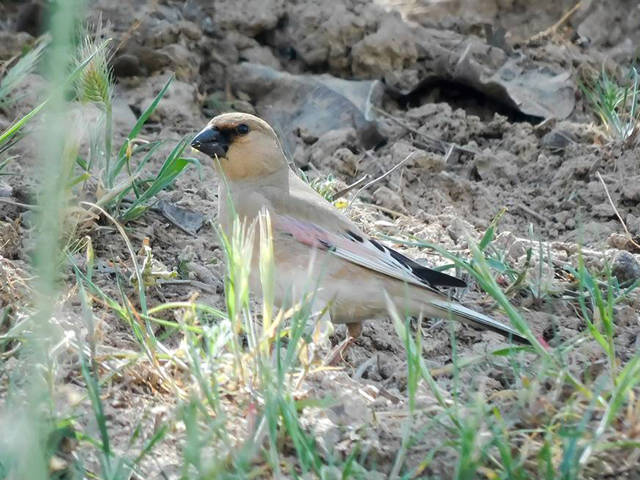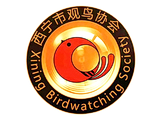search
classification
|
basic information
|
video
|
reports |
Desert Finch
Rhodospiza obsoleta (Lichtenstein, 1832)

|
 adult
|
|
|
2023-05-09
Jalalabad pistachio forest |
© Jérémie Berlioux
|
|
Description
Male Desert Finch has pale brownish-sandy mantle, head, throat and craw; mantle is slightly darker than breast. Lores and base-bill feathers are black. Belly and undertail are white. Uppertail and flanks are clayey-brown. Lesser and median wing coverts are rusty-sandy, greater coverts are dark-brown with broad pink edges. Flight feathers are black with white and pink edges on outer webs. On furled wing these edges formed large pink patch in the middle, and white patch closer to tip. Tail feathers are black with broad white edges. Claws are horn-color, bill is black grey-tinged. Female is paler than male. Flight and tail feathers are dark-brownish with white edges. Pink patch on wing is paler than in male. Lores and base-bill feathers are buff-sandy. Juveniles are similar on females; greater wing coverts are brownish with pink-yellow tips. Bill is pale, off-yellow darkened in winter. Sizes. males: wing 83-90, tail 55-64, tarsus 15,6-17, bill 8.1-9.8 mm. Female: wing 81-85, tail 54-60, tarsus 15.5 - 17, bill 8.0 -9.4 mm. Weight: 17.5 - 28.0 gr.
Biology
Desert Finch is common breeding migrant. It inhabits saxaul forests with some open aresas (salines, glades), oasis plantations, man-made forest, gardens, groves, villages and towns, prefers places near the water; both on plains and in mountain up to 800-1200 m. In spring Desert Finch arrives in early-mid March in small flocks of up to 40 birds; spring migration finishes in mid-April - early May. Desert Finch breeds in separate pairs at 0.2-1.5 km from each other. Nest is built by female, sometimes with some help of male; nest is built in trees or in bushes (saxaul, elm, poplar, mulberry, maple, bastard acacia, apricot) at 1-4 m above ground; nest is from thin twigs and grass stems and is lined with hair and vegetation down (in settlements the cotton wool is used very gladly). Clutches of 3-7, usually 5-6 eggs founded from mid-April till mid-July. Only female incubates for about two weeks, this time male feeds her. Both parents feed juveniles, which fledged at age 12-13 days old. Two broods reared per year. After juveniles start independent life, birds join in flocks. Autumn migration at Chokpak Pass begins in end of August - early September, majority of birds migrates in mid-October.
References
"Птицы Казахстана" том 5. "Наука". Алма-Ата, 1974. Э.И.Гаврилов. "Фауна и распространение птиц Казахстана". Алматы, 1999. Gavrilov E. I., Gavrilov A. E. "The Birds of Kazakhstan". Almaty, 2005.



